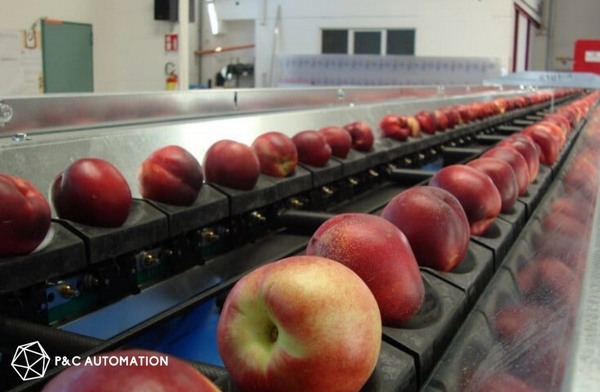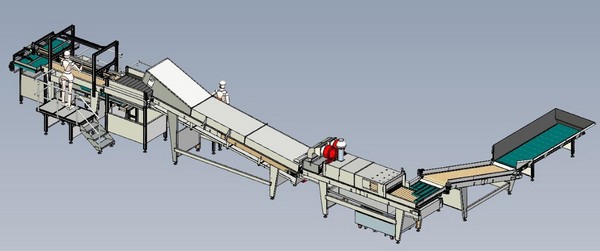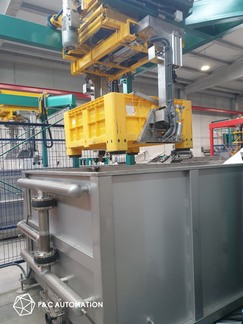The worker shortage in the Australian horticulture industry following the COVID-19 pandemic has led to a surge in interest for automated systems in the past few months for one post-harvest consulting and equipment supply company in South-East Queensland.
P&C Automation Director Hayden Stewart says the demand has been driven mainly by labour issues in packing sheds around Australia.
"The clear main issue is the labour shortage, many clients have been forward-thinking to create plans to work around this, but some clients are left behind," he said. "These clients then struggle to get their produce from the farm to the retailer, which they end up with spoiled produce and profit loss."

The second issue, according to Mr Stewart, is the demand for new equipment is stretching the capability of overseas suppliers, as a large percentage of parts and systems are imported from companies who do not have a local presence in Australia.
"This means due to travel restrictions they cannot deliver this equipment to Australia with the correct staff to install and commission this equipment,” he said. “This is driving up local manufacturing of equipment which is putting a strain on the supply chain of parts/components in Australia. This is causing longer than usual lead times for locally manufactured equipment."
The company works with a range of clients across Australia in the fresh produce sector, mostly within the fresh fruit side of the sector, such as citrus, mango and avocado. But P&C Automation also works with many clients in vegetables and processed products, in all the main growing regions in Australia, from the Victoria and New South Wales border all the way to Far North Queensland Tablelands.
"We base our service on relationships; we want to partner with our clients, in the long run, to help grow their business over the years, rather than make 'quick sales'," Mr Stewart said. "We do this by not just putting a proposal and quote in front of them, but instead helping them really design and assess what equipment they need to improve and grow their business. We do this by helping with forming feasibility studies/reports, ROI reports and supplying in-depth straight forward information regarding what and how new equipment will benefit them along with data showing exactly what they can expect."

But Mr Stewart is quick to remind people that implementing new automated systems does not necessarily mean a loss of jobs. Rather, it means improvements in efficiency in production, changes in the way produce is processed, and the speed it is processed.
"I hear many people saying automation is 'taking away jobs'. This is not the case, we 'move jobs' to higher levels," he explained. "This allows for people to upskill and learn new ways of working. Instead of having a packing facility with many employees carrying out manual handling tasks. We can cut this number down and the remainder of the employees can be moved into roles which oversee the automated equipment. Which normally allows for a higher level of job satisfaction. Automation will always need high skill level employees to oversee, maintenance and control it."

He added that P&C Automation has worked with several clients recently to implement changes within pre-existing automated systems; assessing current equipment, downtimes, production methods and current systems. Clients are then provided with reports, which outline where inefficiencies are within their current methods.
"These inefficiencies are normally little points most people overlook," Mr Stewart said. "Which in these cases were a 'weak link' situations with a certain piece of equipment causing production restriction, high downtime rates, and general issues. We advised our clients on the best method to improve these issues, with new replacement equipment. We then worked with the clients to service and improve the running of existing equipment to then improve production speeds overall and efficiency of all new and existing equipment. We see many clients thinking they have to replace 'everything' to improve production, rather in most cases it may be only the fact of assessing the current equipment and implementing small changes or updates to produce a dramatic improvement."
Mr Stewart sees a big gap in available automated equipment in the post-harvest sector, compared to food processing automation, and says he wants to help clients move forward and "catch up” to utilise systems, solutions and processes which are currently out there but need to be “tweaked” to suit the post-harvest sector.
 "We are currently looking for clients from all sides of the post-harvest sector to work with who currently have issues or roadblock within their facilities which currently does not have a solution," he said. "We want to partner with these clients to facilitate R&D projects to design and manufacture a new system to fill these gaps in available equipment. One area we are looking at is Melon production within Australia, many growers are still operating with a high per cent of manual processing, with the equipment currently out there not fully suited for use on the size/weight of their crop or does not suit the Australian growers."
"We are currently looking for clients from all sides of the post-harvest sector to work with who currently have issues or roadblock within their facilities which currently does not have a solution," he said. "We want to partner with these clients to facilitate R&D projects to design and manufacture a new system to fill these gaps in available equipment. One area we are looking at is Melon production within Australia, many growers are still operating with a high per cent of manual processing, with the equipment currently out there not fully suited for use on the size/weight of their crop or does not suit the Australian growers."
For more information
Hayden Stewart
P&C Automation
Phone: +61 409 235 774
info@pcautomation.com.au
www.pcautomation.com.au
